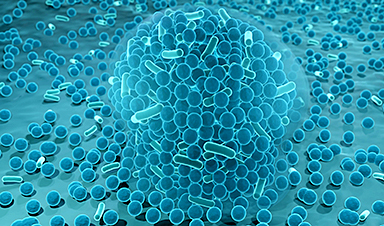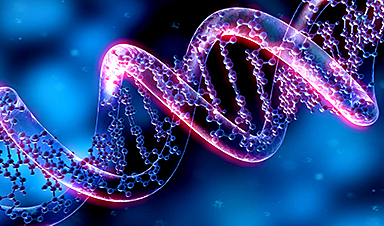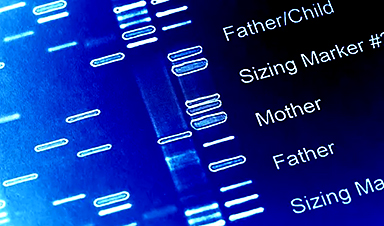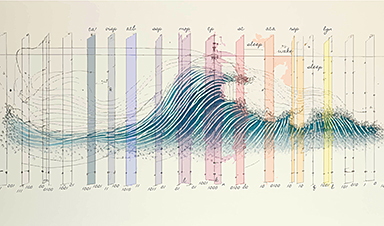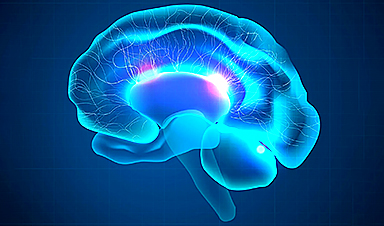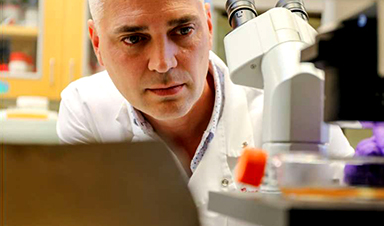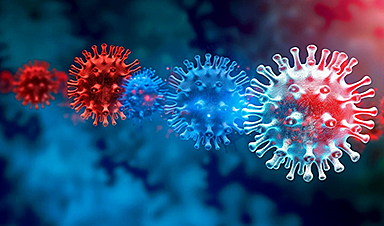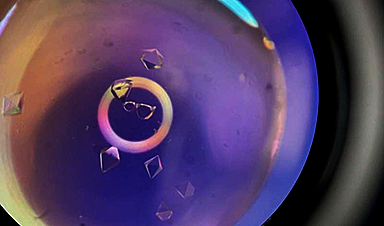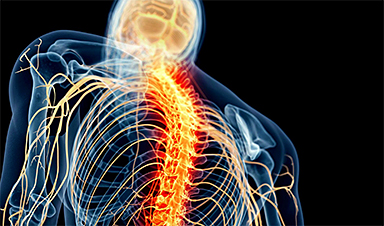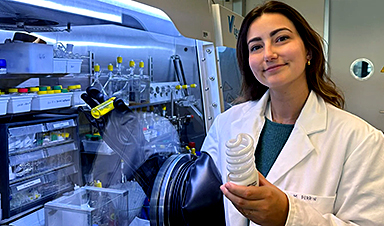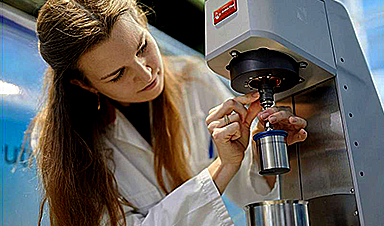Researchers from the University of Illinois Chicago and Harvard University have created an antibiotic that may provide medicine a new tool to combat bacteria resistant to drugs and the illnesses they trigger.
The antibiotic, cresomycin, described in Science, effectively suppresses pathogenic bacteria that have become resistant to many commonly prescribed antimicrobial drugs.
The promising novel antibiotic is the latest finding for a longtime research partnership between the group of Yury Polikanov, associate professor of biological sciences at UIC, and colleagues at Harvard. The UIC scientists provide critical insights into cellular mechanisms and structure that help the researchers at Harvard design and synthesize new drugs.
Understanding Antibiotic Resistance
In developing the new antibiotic, the group focused on how many antibiotics interact with a common cellular target – the ribosome – and how drug-resistant bacteria modify their ribosomes to defend themselves.
More than half of all antibiotics inhibit the growth of pathogenic bacteria by interfering with their protein biosynthesis – a complex process catalyzed by the ribosome, which is akin to “a 3D printer that makes all the proteins in a cell,” Polikanov said. Antibiotics bind to bacterial ribosomes and disrupt this protein-manufacturing process, causing bacterial invaders to die.
But many bacterial species evolved simple defenses against this attack. In one defense, they interfere with antibiotic activity by adding a single methyl group of one carbon and three hydrogen atoms to their ribosomes.
Scientists speculated that this defense was simply bacteria physically blocking the site where drugs bind to the ribosome, “like putting a push pin on a chair,” Polikanov said. But the researchers found a more complicated story, as they described in a paper recently published in Nature Chemical Biology.
By using a method called X-ray crystallography to visualize drug-resistant ribosomes with nearly atomic precision, they discovered two defensive tactics. The methyl group, they found, physically blocks the binding site, but it also changes the shape of the ribosome’s inner “guts,” further disrupting antibiotic activity.
Overcoming Bacterial Defenses
Polikanov’s laboratory then used X-ray crystallography to investigate how certain drugs, including one published in Nature by the UIC/Harvard collaboration in 2021, circumvent this common form of bacterial resistance.
“By determining the actual structure of antibiotics interacting with two types of drug-resistant ribosomes, we saw what could not have been predicted by the available structural data or by computer modeling,” Polikanov said. “It’s always better to see it once than hear about it 1,000 times, and our structures were important for designing this promising new antibiotic and understanding how it manages to escape the most common types of resistance.”
Cresomycin, the new antibiotic, is synthetic. It’s preorganized to avoid the methyl-group interference and attach strongly to ribosomes, disrupting their function. This process involves locking the drug into a shape that is pre-optimized to bind to the ribosome, which helps it get around bacterial defenses.
“It simply binds to the ribosomes and acts as if it doesn’t care whether there was this methylation or not,” Polikanov said. “It overcomes several of the most common types of drug resistance easily.”
Cresomycin’s Promising Potential
In animal experiments conducted at Harvard, the drug protected against infections with multidrug-resistant strains of common disease drivers including Staphylococcus aureus, Escherichia coli, and Pseudomonas aeruginosa. Based on these promising results, the next step is to assess the effectiveness and safety of cresomycin in humans.
But even at this early stage, the process demonstrates the critical role that structural biology plays in designing the next generation of antibiotics and other life-saving medicines, according to Polikanov.
“Without the structures, we would be blind in terms of how these drugs bind and act upon modified drug-resistant ribosomes,” Polikanov said. “The structures that we determined provided fundamental insight into the molecular mechanisms that allow these drugs to evade the resistance.”
Reference: “An antibiotic preorganized for ribosomal binding overcomes antimicrobial resistance” by Kelvin J. Y. Wu, Ben I. C. Tresco, Antonio Ramkissoon, Elena V. Aleksandrova, Egor A. Syroegin, Dominic N. Y. See, Priscilla Liow, Georgia A. Dittemore, Meiyi Yu, Giambattista Testolin, Matthew J. Mitcheltree, Richard Y. Liu, Maxim S. Svetlov, Yury S. Polikanov and Andrew G. Myers, 15 February 2024, Science.
DOI: 10.1126/science.adk8013
News
Breakthrough in Antimicrobial Technology with Cinnamon-Based Nanokiller
The need for innovative antimicrobial agents has become increasingly urgent due to the rise of antibiotic-resistant pathogens and the persistent threat of infections acquired during hospital stays. Traditional antibiotics and antiseptics are often ineffective [...]
The Silent Battle Within: How Your Organs Choose Between Mom and Dad’s Genes
Research reveals that selective expression of maternal or paternal X chromosomes varies by organ, driven by cellular competition. A new study published today (July 26) in Nature Genetics by the Lymphoid Development Group at the MRC [...]
Study identifies genes increasing risk of severe COVID-19
Whether or not a person becomes seriously ill with COVID-19 depends, among other things, on genetic factors. With this in mind, researchers from the University Hospital Bonn (UKB) and the University of Bonn, in [...]
Small regions of the brain can take micro-naps while the rest of the brain is awake and vice versa
Sleep and wake: They're totally distinct states of being that define the boundaries of our daily lives. For years, scientists have measured the difference between these instinctual brain processes by observing brain waves, with [...]
Redefining Consciousness: Small Regions of the Brain Can Take Micro-Naps While the Rest of the Brain Is Awake
The study broadly reveals how fast brain waves, previously overlooked, establish fundamental patterns of sleep and wakefulness. Scientists have developed a new method to analyze sleep and wake states by detecting ultra-fast neuronal activity [...]
AI Reveals Health Secrets Through Facial Temperature Mapping
Researchers have found that different facial temperatures correlate with chronic illnesses like diabetes and high blood pressure, and these can be detected using AI with thermal cameras. They highlight the potential of this technology [...]
Breakthrough in aging research: Blocking IL-11 extends lifespan and improves health in mice
In a recent study published in the journal Nature, a team of researchers used murine models and various pharmacological and genetic approaches to examine whether pro-inflammatory signaling involving interleukin (IL)-11, which activates signaling molecules such [...]
Promise for a universal influenza vaccine: Scientists validate theory using 1918 flu virus
New research led by Oregon Health & Science University reveals a promising approach to developing a universal influenza vaccine—a so-called "one and done" vaccine that confers lifetime immunity against an evolving virus. The study, [...]
New Projects Aim To Pioneer the Future of Neuroscience
One study will investigate the alterations in brain activity at the cellular level caused by psilocybin, the psychoactive substance found in “magic mushrooms.” How do neurons respond to the effects of magic mushrooms? What [...]
Decoding the Decline: Scientific Insights Into Long COVID’s Retreat
Research indicates a significant reduction in long COVID risk, largely due to vaccination and the virus’s evolution. The study analyzes data from over 441,000 veterans, showing lower rates of long COVID among vaccinated individuals compared [...]
Silicon Transformed: A Breakthrough in Laser Nanofabrication
A new method enables precise nanofabrication inside silicon using spatial light modulation and laser pulses, creating advanced nanostructures for potential use in electronics and photonics. Silicon, the cornerstone of modern electronics, photovoltaics, and photonics, [...]
Caught in the actinium: New research could help design better cancer treatments
The element actinium was first discovered at the turn of the 20th century, but even now, nearly 125 years later, researchers still don't have a good grasp on the metal's chemistry. That's because actinium [...]
Innovative Light-Controlled Drugs Could Revolutionize Neuropathic Pain Treatment
A team of researchers from the Institute for Bioengineering of Catalonia (IBEC) has developed light-activated derivatives of the anti-epileptic drug carbamazepine to treat neuropathic pain. Light can be harnessed to target drugs to specific [...]
Green Gold: Turning E-Waste Into a Treasure Trove of Rare Earth Metals
Scientists are developing a process inspired by nature that efficiently recovers europium from old fluorescent lamps. The approach could lead to the long-awaited recycling of rare earth metals. A small molecule that naturally serves [...]
Cambridge Study: AI Chatbots Have an “Empathy Gap,” and It Could Be Dangerous
A new study suggests a framework for “Child Safe AI” in response to recent incidents showing that many children perceive chatbots as quasi-human and reliable. A study has indicated that AI chatbots often exhibit [...]
Nanoparticle-based delivery system could offer treatment for diabetics with rare insulin allergy
Up to 3% of people with diabetes have an allergic reaction to insulin. A team at Forschungszentrum Jülich has now studied a method that could be used to deliver the active substance into the [...]

